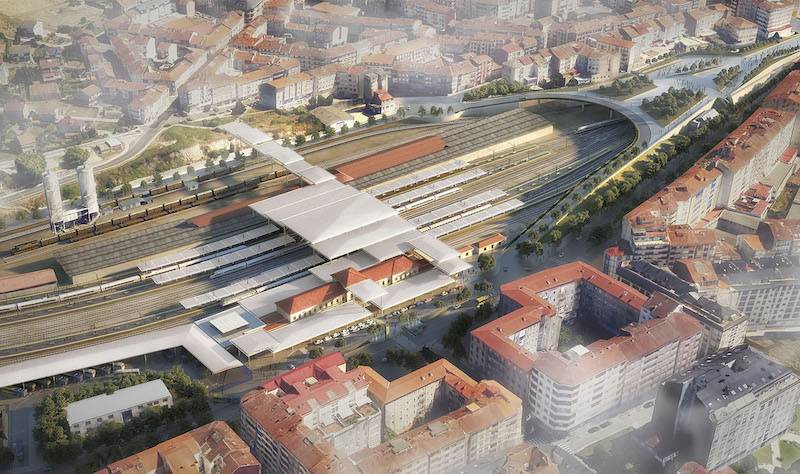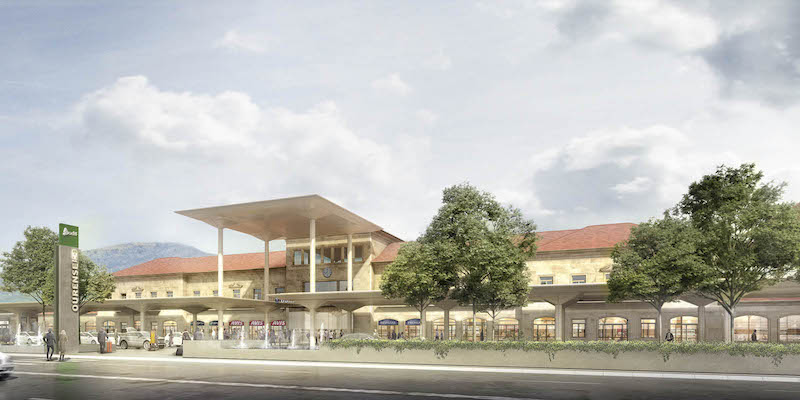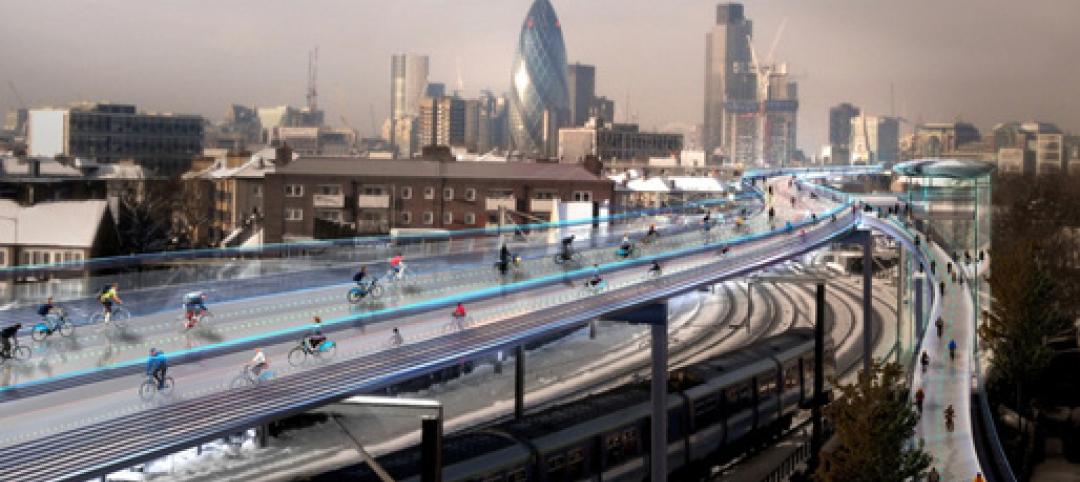Foster + Partners’ plan for the Ourense FFCC Station in Galicia, Spain is to bring together high-speed rail and bus stations in a major urban intervention. This will open pedestrian links between the districts on either side of the tracks and create a new public plaza for the city.
The existing railway line is being upgraded to accommodate high-speed rail links in the region, something the recently revealed design takes into consideration. The plans call for a new station that caters to the increased passenger numbers created by the high-speed rail and creates a framework for a new transport interchange. Included in the new terminal will be a direct connection with the adjacent bus terminal, a new urban square in front of the station, and a pedestrian walkway and public park over the tracks.
 Rendering courtesy of Foster + Partners.
Rendering courtesy of Foster + Partners.
The addition will be made from concrete plates and slender columns that match the color of the existing station’s granite. The new concrete plates will provide shelter from rain and high temperatures common to the area’s summers. The roofs are designed as a modular system requiring minimal maintenance with the capability of accommodating future expansions.
A new portico highlights the entry canopy and will feature cafés and shops. The front of the station will spill directly onto a new urban square. Meanwhile, the internal lobby will be reconfigured to create a space filled with natural light and triple-height ceilings. Historic frescoes on the upper portions of the walls are being retained and restored.
 Rendering courtesy of Foster + Partners.
Rendering courtesy of Foster + Partners.
Wayfinding through the station has been improved via clear visual connections from the check-in stations to the trains. Additionally, a direct internal connection to the bus station creates an easy link to the city and surrounding area.
Related Stories
Smart Buildings | Jan 7, 2014
9 mega redevelopments poised to transform the urban landscape
Slowed by the recession—and often by protracted negotiations—some big redevelopment plans are now moving ahead. Here’s a sampling of nine major mixed-use projects throughout the country.
| Jan 6, 2014
What is value engineering?
If you had to define value engineering in a single word, you might boil it down to "efficiency." That would be one word, but it wouldn’t be accurate.
| Jan 3, 2014
Norman Foster proposes elevated bikeways throughout London
Called SkyCycle, the plan calls for the construction of wide, car-free decks atop the city's existing railway corridors.
| Dec 13, 2013
Safe and sound: 10 solutions for fire and life safety
From a dual fire-CO detector to an aspiration-sensing fire alarm, BD+C editors present a roundup of new fire and life safety products and technologies.
| Dec 10, 2013
16 great solutions for architects, engineers, and contractors
From a crowd-funded smart shovel to a why-didn’t-someone-do-this-sooner scheme for managing traffic in public restrooms, these ideas are noteworthy for creative problem-solving. Here are some of the most intriguing innovations the BD+C community has brought to our attention this year.
| Nov 27, 2013
Wonder walls: 13 choices for the building envelope
BD+C editors present a roundup of the latest technologies and applications in exterior wall systems, from a tapered metal wall installation in Oklahoma to a textured precast concrete solution in North Carolina.
| Nov 26, 2013
Construction costs rise for 22nd straight month in November
Construction costs in North America rose for the 22nd consecutive month in November as labor costs continued to increase, amid growing industry concern over the tight availability of skilled workers.
| Nov 25, 2013
Building Teams need to help owners avoid 'operational stray'
"Operational stray" occurs when a building’s MEP systems don’t work the way they should. Even the most well-designed and constructed building can stray from perfection—and that can cost the owner a ton in unnecessary utility costs. But help is on the way.
| Oct 30, 2013
11 hot BIM/VDC topics for 2013
If you like to geek out on building information modeling and virtual design and construction, you should enjoy this overview of the top BIM/VDC topics.
| Oct 18, 2013
Researchers discover tension-fusing properties of metal
When a group of MIT researchers recently discovered that stress can cause metal alloy to fuse rather than break apart, they assumed it must be a mistake. It wasn't. The surprising finding could lead to self-healing materials that repair early damage before it has a chance to spread.

















